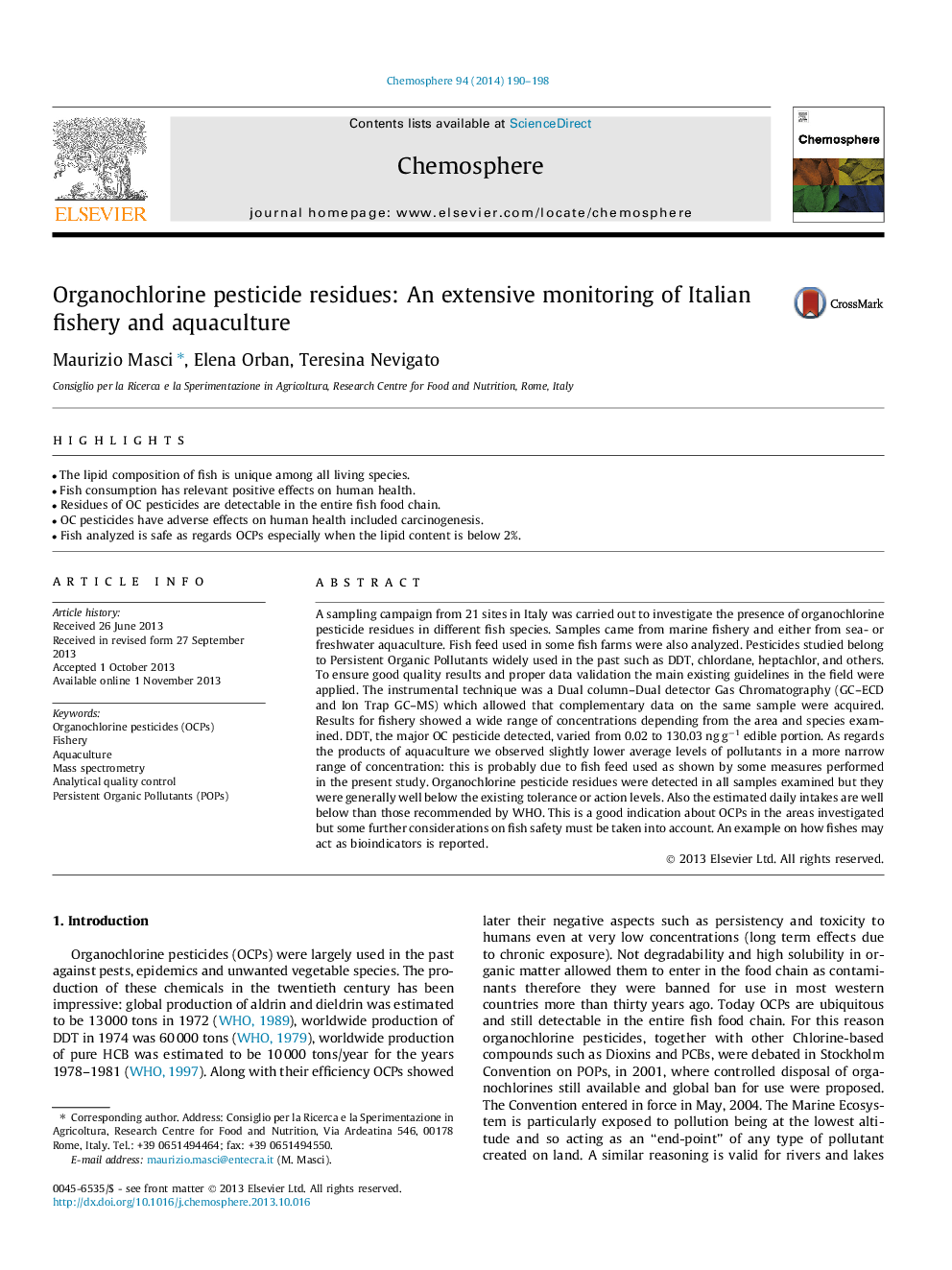| Article ID | Journal | Published Year | Pages | File Type |
|---|---|---|---|---|
| 6309985 | Chemosphere | 2014 | 9 Pages |
Abstract
A sampling campaign from 21 sites in Italy was carried out to investigate the presence of organochlorine pesticide residues in different fish species. Samples came from marine fishery and either from sea- or freshwater aquaculture. Fish feed used in some fish farms were also analyzed. Pesticides studied belong to Persistent Organic Pollutants widely used in the past such as DDT, chlordane, heptachlor, and others. To ensure good quality results and proper data validation the main existing guidelines in the field were applied. The instrumental technique was a Dual column-Dual detector Gas Chromatography (GC-ECD and Ion Trap GC-MS) which allowed that complementary data on the same sample were acquired. Results for fishery showed a wide range of concentrations depending from the area and species examined. DDT, the major OC pesticide detected, varied from 0.02 to 130.03 ng gâ1 edible portion. As regards the products of aquaculture we observed slightly lower average levels of pollutants in a more narrow range of concentration: this is probably due to fish feed used as shown by some measures performed in the present study. Organochlorine pesticide residues were detected in all samples examined but they were generally well below the existing tolerance or action levels. Also the estimated daily intakes are well below than those recommended by WHO. This is a good indication about OCPs in the areas investigated but some further considerations on fish safety must be taken into account. An example on how fishes may act as bioindicators is reported.
Keywords
Related Topics
Life Sciences
Environmental Science
Environmental Chemistry
Authors
Maurizio Masci, Elena Orban, Teresina Nevigato,
